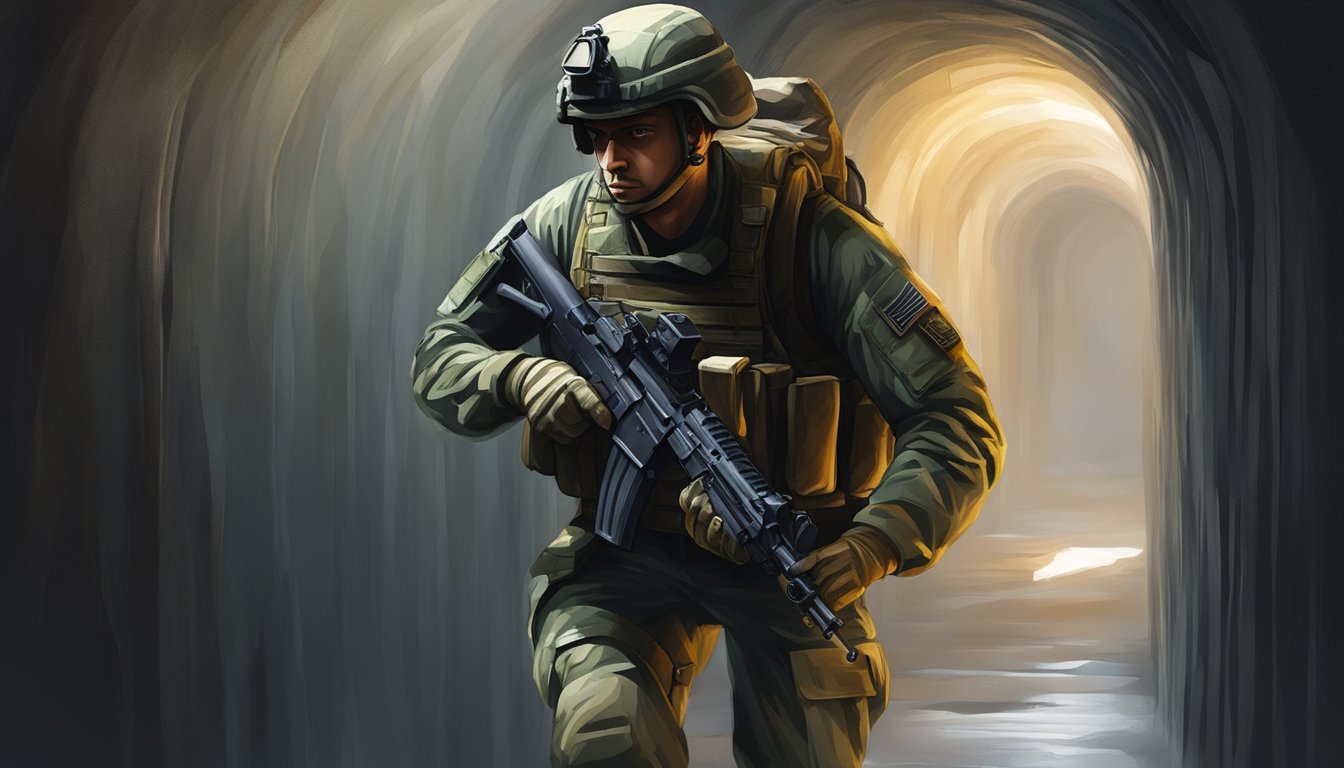Deep beneath the jungles of Vietnam, within the perilous labyrinth of Viet Cong tunnels, Nicholas “Napa Nick” Sanza faced danger head-on.
Equipped with only a few essential tools—a bamboo stick, a bayonet, and a silenced revolver—he braved an environment where threats hid in every shadow.
Sanza’s Journey Begins
Sanza’s journey into this shadowy underworld began at a time when the Vietnam War was already reaching its peak.
Armed with a specially designed three-and-a-half-foot bamboo pole, a 14-inch World War II bayonet, and his trusty .38 Special pistol, he quickly became skilled at maneuvering through cramped underground spaces.
Embracing the local culture, he wore the iconic black pajamas of the Viet Cong and dined on their food, tactics that helped him blend seamlessly into the darkness.
Reflecting on his experiences, Sanza thought back to the vast network of tunnels U.S. soldiers stumbled upon earlier in the war.
These intricate passages, referred to as the Cu Chi tunnels, spanned an astonishing 125 miles and were ingeniously constructed to evade detection and withstand military strikes.
Air circulation systems kept them hidden, while cleverly placed traps allowed for strategic surprises, notably during the Tet Offensive of 1968.
Military Legacy and Training
The values of military service ran deep in Sanza’s family, influencing his decision to enlist in the Army in 1971.
His grandfather fought in the Spanish-American War, and his father served as General George S. Patton’s final driver in World War II.
After completing cryptography training, Sanza embraced his role as a tunnel rat, a shift that transformed him into a dedicated recovery specialist in the war’s later stages.
Standing at only 5 feet 4 inches and weighing 130 pounds, Sanza’s stature was an advantage in the narrow tunnels that often proved challenging for taller soldiers.
Under the tutelage of a seasoned Defense Intelligence Agency veteran who had crafted tunnels during World War II, he learned vital survival skills.
This mentor equipped him with knowledge about navigating the oppressive darkness and recognizing danger—as dampness in the tunnels often indicated hidden traps set by the Viet Cong.
To enhance his chances of survival on missions, Sanza devised his own tools.
His bamboo stick became a multipurpose asset, helping to disarm traps and fend off venomous snakes.
Fittingly, his bayonet facilitated close-quarters combat, enabling him to engage swiftly and silently.
Uncovering the Truth
In a bid to remain undetected, he adopted a unique camouflage technique.
For extended periods, he avoided showers, layering himself with mud and foliage while adhering to a diet similar to that of the Viet Cong.
This transformation allowed him to move more stealthily through hostile territory.
As the conflict wore on and reports surfaced about American prisoners potentially held in the tunnels, Sanza’s missions gained newfound urgency.
His first significant assignment occurred in 1972, along the Laos-Cambodia border.
Tasked with locating 1,200 missing servicemen, he faced the grim reality of the war—discovering the remains of two Americans during his search filled him with both anger and determination.
This encounter prompted him to question the Defense Intelligence Agency officials overseeing his mission about the profound risks involved.
In the waning days of the Vietnam War, Sanza successfully recovered the remains of 30 American soldiers before the U.S. military withdrew.
Today, the Defense POW/MIA Agency reports that 1,573 American service members from this conflict still remain unaccounted for.
Now, as he shares his story at public events, Sanza grapples with the psychological scars of his experiences, notably PTSD.
Though he opens up about certain aspects of his past, he maintains a wall around other memories to protect his mental health.
Yet, a sense of pride resonates within him as he recalls his efforts to locate missing servicemen and recover their remains.
The memories of each soldier he encountered are forever etched in his mind, a weight he continues to carry.
Source: Taskandpurpose.com

